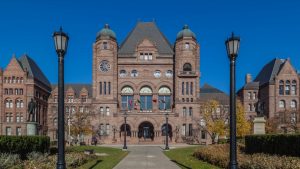Obtaining the go-ahead for many stormwater facilities under one approval is the objective of an environmental compliance approval pilot underway in London.
The approach "would cut down our timelines by about six to nine months," for each project said Shawna Chambers, London’s stormwater engineering division manager.
The pilot addresses the Dingman Creek subwatershed, an area that covers 42,500 acres in the city’s fast-growing south end. The city is also conducting a class environmental assessment to support a stormwater servicing strategy for the creek.
"We’ll basically have the works pre-approved within this environmental compliance approval," Chambers said.
"So we would have an envelope of projects identified in the environmental assessment, and once we pull items from that envelope, we would just have to basically notify the industry and go ahead and build."
The city and the Upper Thames River Conservation Authority are working with the Ontario Ministry of the Environment and Climate Change to develop the approval.
Shawna Chambers
London Stormwater Engineering Division
Gary Wheeler, a spokesperson for the ministry, said in an email that the aim of the project from a provincial perspective is "to get us (to) that place where cumulative environmental impacts to the overall watershed are taken into account in managing municipal stormwater. The approval flexibility that is achieved through this new approach helps the municipal stormwater system address watershed needs and adapt to a changing climate."
It’s the first time the method has been undertaken in Ontario and other jurisdictions, he said, and credited advancements in stormwater and watershed management for making the new approach possible.
According to a 2015 City of London report, the area contains 14 projects earmarked for completion over the next two decades.
To have conducted separate assessments for each would have cost $2.8 million in total; the report estimates the consolidated approach shaves costs down to $600,000.
With considerable residential development taking place in the city’s southwest, the approach will allow facilities to be built in a timely fashion, Chambers added. Since 2014, London has tendered and built stormwater management ponds rather than leaving the work to developers primarily because of the increase in volume and intensity of environmental requirements in recent years.
Chambers said the combined approach in both the pilot compliance approval and the environmental assessment will result in a corridor of stormwater management that also creates the opportunity to develop recreational space including a tree-lined path.
"It’s a really large opportunity to make something special in south London."
Both the environmental assessment and compliance approval are expected to be complete in 2018.
Aquafor Beech Limited has been hired to complete the assessment and the Upper Thames River Conservation Authority is conducting modelling to update the subwatershed’s floodplain projections.
In the corridor, Dingman Creek will play a more significant role in managing larger flows, Chambers said.
A 20-hectare engineered wetland developed in 2015 in the city’s southwest end will also contribute to water management.
"We’re engineering nature to the best of our abilities. It’s part of a new movement which is moving towards trying to make things mimic nature as much as possible."
The corridor will include ponds in subdivisions, and Chambers anticipated that low impact approaches such as infiltration-type facilities would increasingly be used for these.
Unlike wet ponds, infiltration facilities don’t keep water on the surface but instead allow it to soak into the ground and eventually filter through to the water table.
The city is using this approach in another west end project that incorporates three ponds as one water-treatment system that will serve nearly 400 acres once complete. The $7.2 million project was engineered by AECOM and is being built by L82 Construction Ltd.
The city opted for the approach because the system will discharge to a cold-water fishery in the city that is a spawning ground for trout. The creek, called Tributary C, discharges to the Thames River.
"In ordinary wet ponds, there’s a lot of thermal pollution that can happen because the solar radiation heats up the facility and then (when it) discharges (the water) is too warm an environment for fish," Chambers explained.
The approach will allow water to remain at the cooler temperatures needed to maintain the spawning ground because water goes directly into the ground.
The water is held within an extensive bed of rock instead of an open surface pond. "The granulars create void spaces where water can be stored until it discharges to the creek," Chambers said.
In all, the city plans to spend $35 million over the next two years in construction of stormwater management services to serve about 1,000 hectares of growth, she said.











Recent Comments
comments for this post are closed